Sustainable Urban Drainage systems (SUDs) have really come to the fore in recent years due to the increased occurrence of significantly damaging flood events in the UK and around the world. The need to find a better planning solution to deal with increased surface water, particularly in urban areas, that also dovetails with the all- important green infrastructure agenda, has never been greater.
New build developments and expanding transport infrastructure tend to interrupt rainfall and the natural movement of water. With greater surface areas of non-permeable materials, a fast influx of rainfall will inevitably lead to flooding and an increased potential for erosive damage downstream and pollution by contaminated water.
Janine Robinson from Portsmouth University wanted to gain a greater understanding of how grasses and wildflowers could play a role in slowing the water flow, therefore reducing erosion and giving the vegetation and soil an opportunity to absorb and ‘lock in’ water borne pollutants.
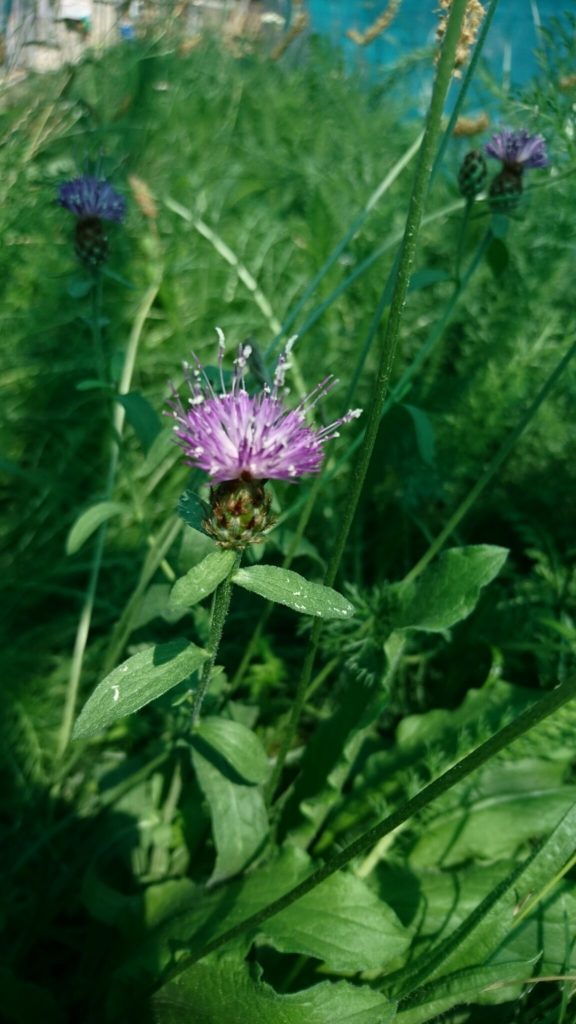
Water borne pollutants tend to be grouped into either: Metals (which have been extensively studied) or PAHs (Polycyclic Aromatic Hydrocarbons). Janine wanted to focus on the impact and journey of man-made PAHs often created by vehicle emissions; brake dust; oil found in road run-off.
Her research encompassed trials using 5 main PAHs including the carcinogenic Benzopyrene. She wanted to look into how pollutants could either be retained or actively absorbed by plants.
The work:
At the outset of the project a model swale just under 10m in length was set up, with turf supplied by Wildflower Turf Ltd bedded in during the end of November 2015. The turf was laid on a 30cm bed of soil to allow sediment samples to be taken at depth.
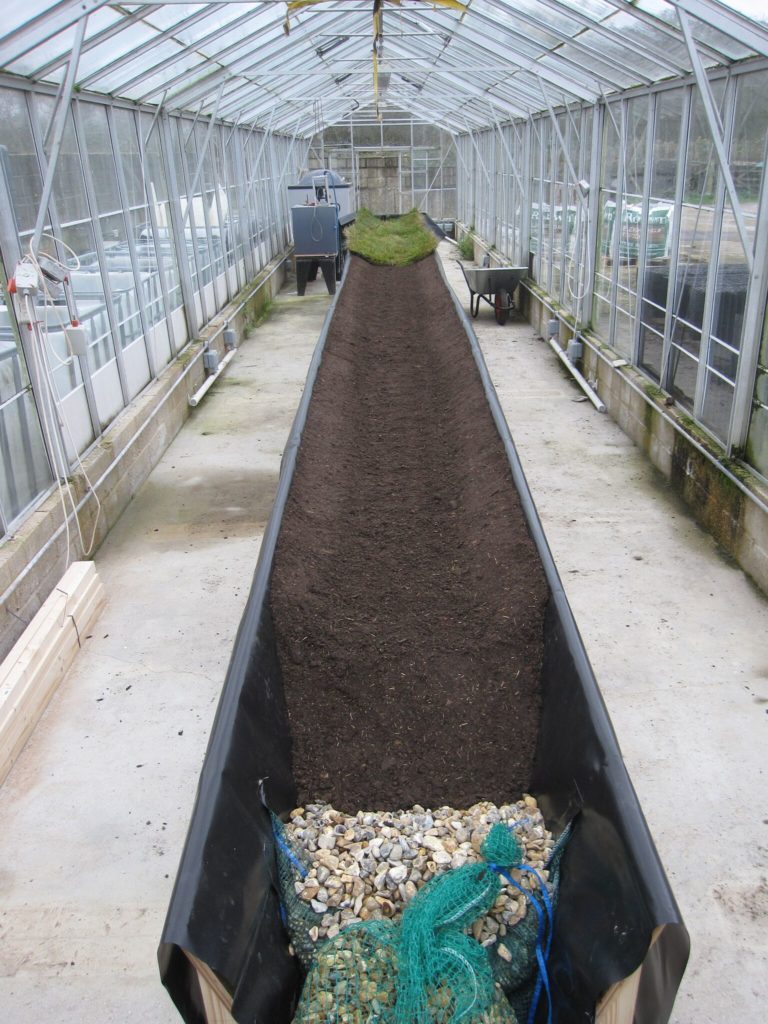
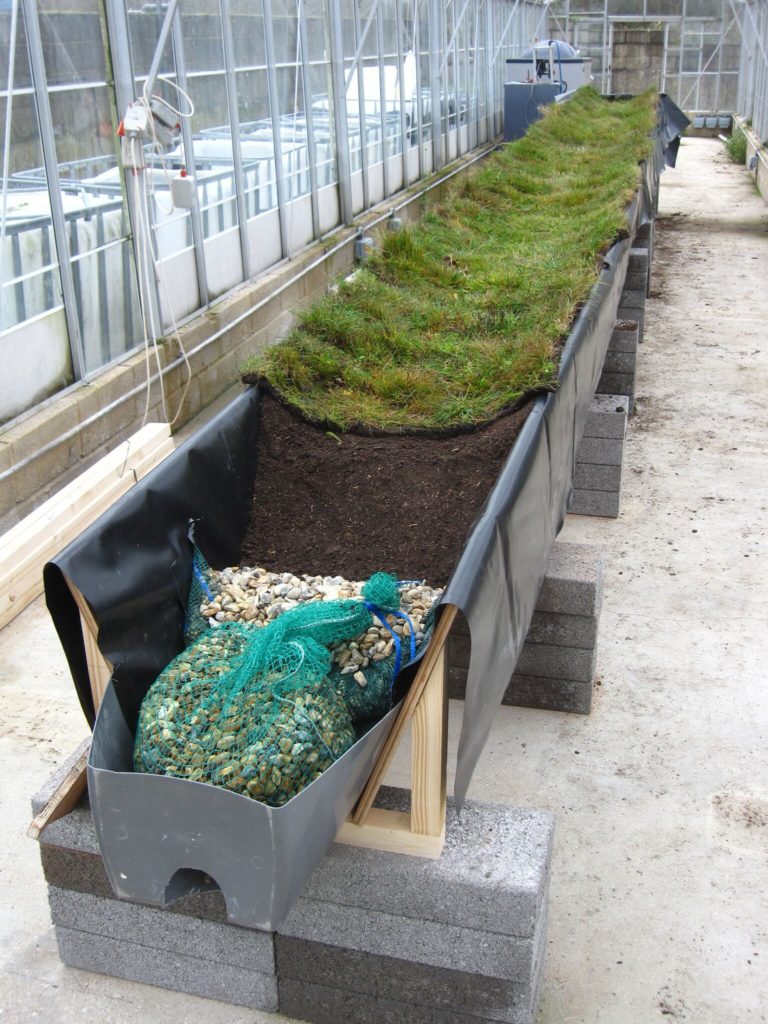
The research then focused on gaining an understanding of the hydrology of the model swale, looking at wet and dry sediment and also low and dense vegetation, with the vegetation cut down to simulate the maintenance that might occur in an urban area.
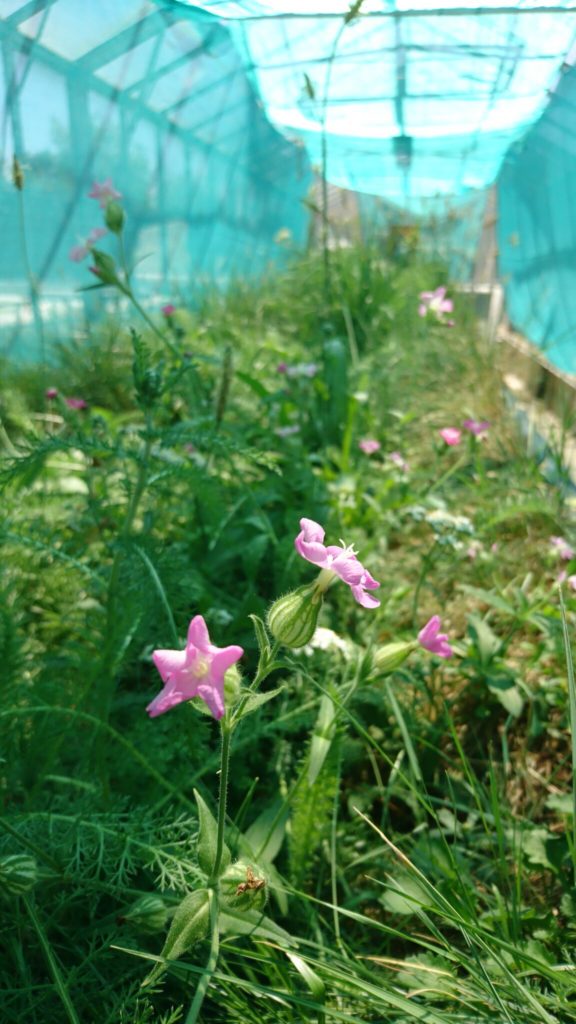
A pollutant source heavy in PAHs was then introduced to the swale as a simulated storm event; i.e. 1,000 litres of water was introduced over a 30-minute period, with the pollutant source (500 litres) sent down the swale during the first 15 minutes of the simulated storm event. Regular, simulated storm events were repeated, with sediment samples taken every two weeks to assess pollutant levels. Runoff out the end of the swale was also collected regularly to allow the output of water quantity to be monitored. Samples have then been taken in between the simulated rain events to assess the degradation of pollutants over time. Secondary mesocosms (more detailed experimental systems) have also been built to prove that it is the plants that are causing the reduction in pollutants, with these experiments currently in progress.
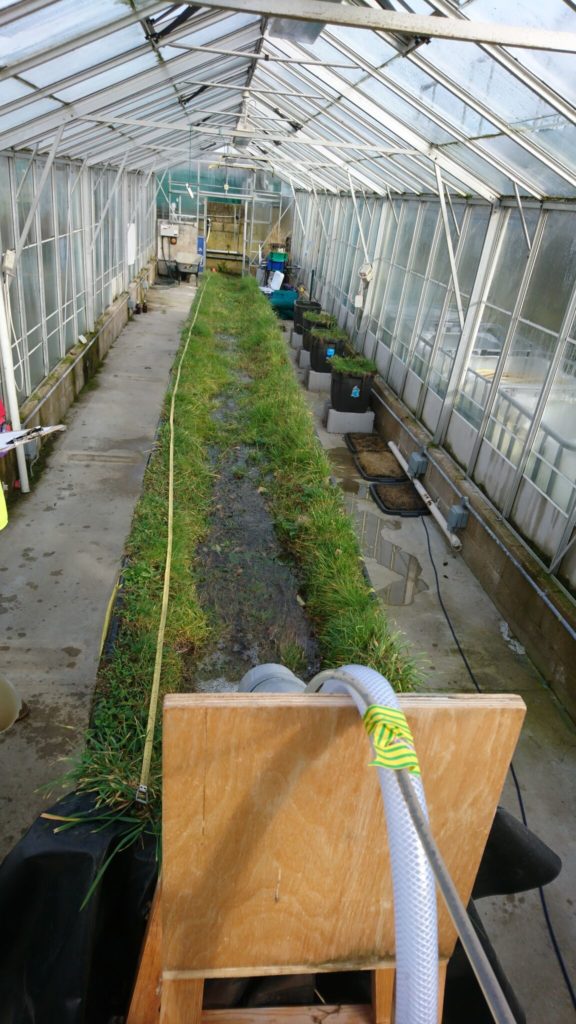
The results thus far:
While still ongoing, certain key observations have been recorded:
- After being subjected to intense pollution, recovery of the plants has been swift, with no visible effect to the growth of the plants
- In the 18 months since bedding in the turf, the root system is mainly located within the top 5cm of soil. Fine roots are penetrating further, but the dense structure of the planting is limited to the upper layer
- Subsequent to the storm events, there was a four-fold increase in the average presence of PAHs in the soil which shows successful capture of the pollutants
- The majority of pollution has been detected in the top 5cm of soil, potentially suggesting that the root system is aiding the retention of pollutants, although this requires further investigation
- PAH levels are significantly lower in the 5-10cm layer compared to the 0-5cm layer for the heavier PAHs. This significant decrease in certain PAHs between the layers sampled indicate that the planted layer traps and retains the particle-bound pollutants.
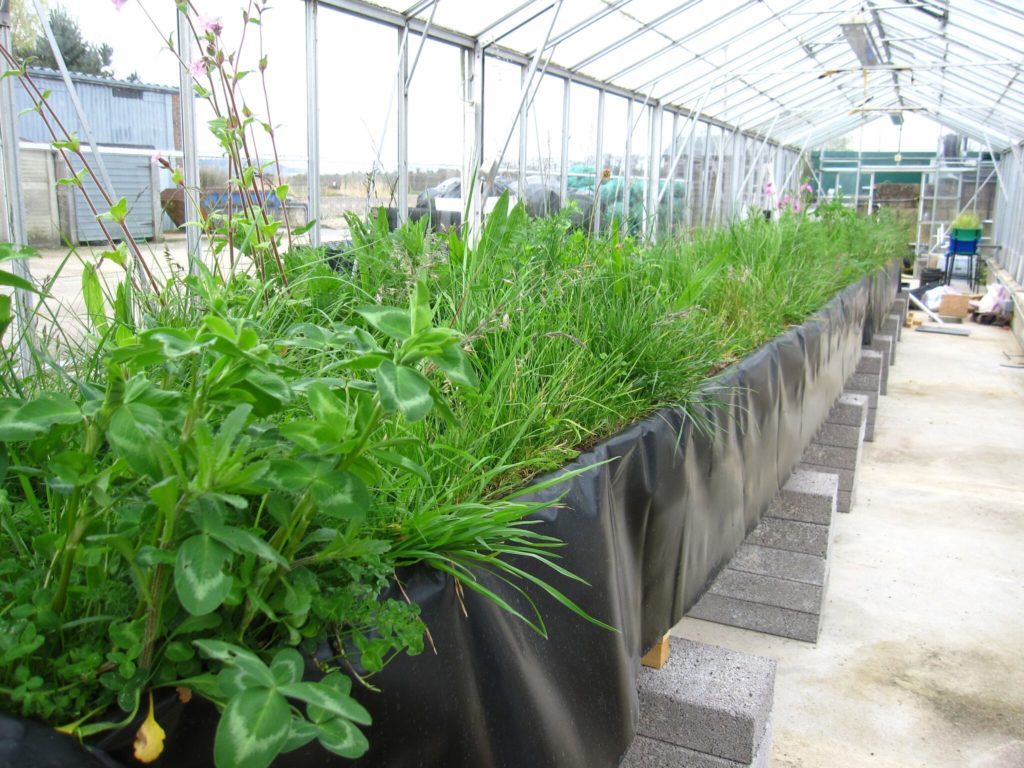
Research extract:
“Based on evidence so far collated it is clear that vegetated swales show significant improvement in water quality.”
Janine Robinson, University of Portsmouth
We look forward to updating you on Janine’s findings as this research progresses, but results to date certainly indicate that wildflowers have an important role to play in terms of mitigating pollution.